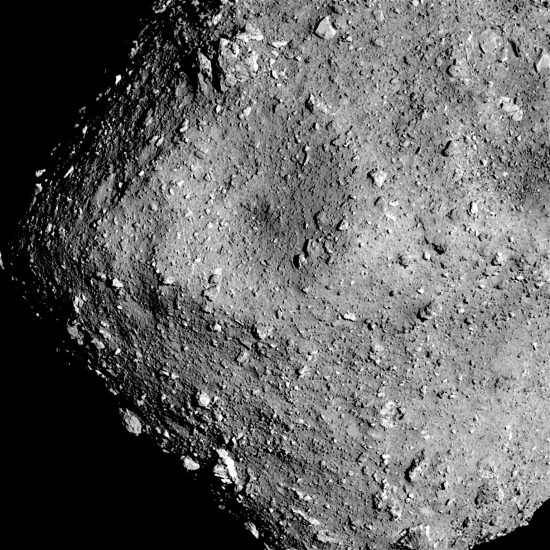
Nov 5, 2019
Rocky bodies in the Solar System display plasma effects.
“Because in the beginning was the plasma.”
— From Hannes Alfvén’s 1970 Nobel Prize Lecture.
Astrogeologists determine asteroid composition and formation estimates based on their anomalous cratering. As written in the past, asteroids 253 Mathilde, 243 Ida, and 433 Eros reveal craters large and small, prompting scientists to speculate that they are really loose conglomerations of rocks and soil, rather like a big gravel pit in space. Since they were not destroyed from impacts, the conclusion is that they “absorbed” the energy in the same way as a pile of sand will cushion the shock from a stone. However, does the gravel theory fit the facts?
According to a recent press release, Hayabusa2 is now just 20 kilometers from asteroid Ryugu. The asteroid is spinning, and has a bulge around its equator, along with raised ridges, although this is not the first time that deep space missions saw a diamond-shaped asteroid.
On March 2, 2004, the European Space Agency (ESA) launched the Rosetta Cometary Probe on a rendezvous mission with 67 P/Churyumov-Gerasimenko, a short period comet. On the way, Rosetta encountered 2867 Steins, a small, irregular body with a maximum diameter of six kilometers. Data from Rosetta’s OSIRIS imaging system revealed a pair of craters with a combined diameter equal to more than 20% of the asteroid’s volume. Mission specialists were “amazed” that the 2-kilometer “impact site” did not blast Steins into tiny fragments.
The electrical history of the solar system includes intensely energetic events and violent interactions between charged planets and moons. Electric arcs can remove material with ease, as is evinced by the experiments conducted by Dr. C. J. Ransom of VEMASAT Laboratories. Plasma discharges can excavate surface depressions, scoop out material, and explode it into space, leaving cleanly cut features.
Plasma arcs do not disturb the surrounding surfaces. Based on laboratory analysis, that is what has occurred on Ryugu, 2867 Steins, and on all the asteroids, moons, and planets of the solar system. At the outset, however, planetary scientists exclude the electrical explanation – which rectifies the anomalies in other theories – because they know almost nothing about the forces involved except to parrot: “if there’s electricity in space it doesn’t do anything.” It never occurs to them that electricity can create the very things they now struggle to understand.
Stephen Smith
The Thunderbolts Picture of the Day is generously supported by the Mainwaring Archive Foundation.












